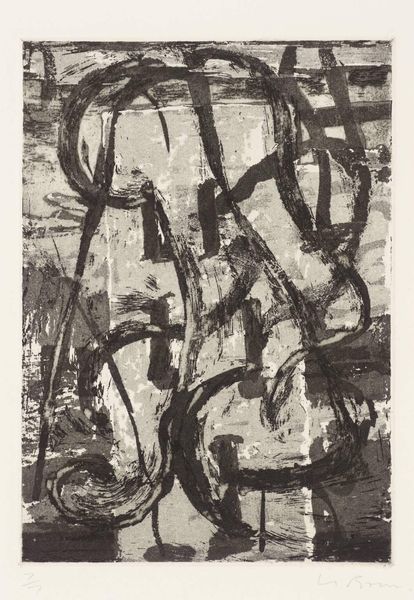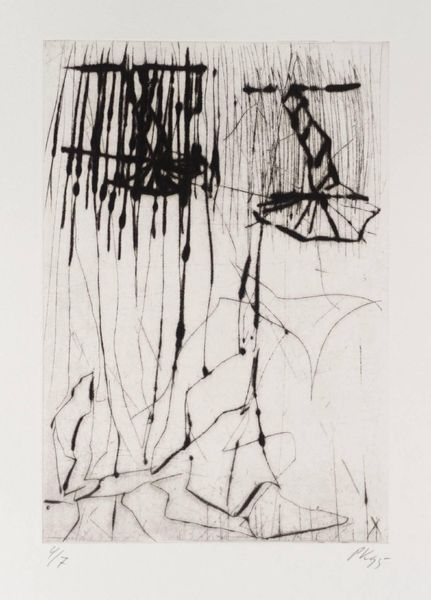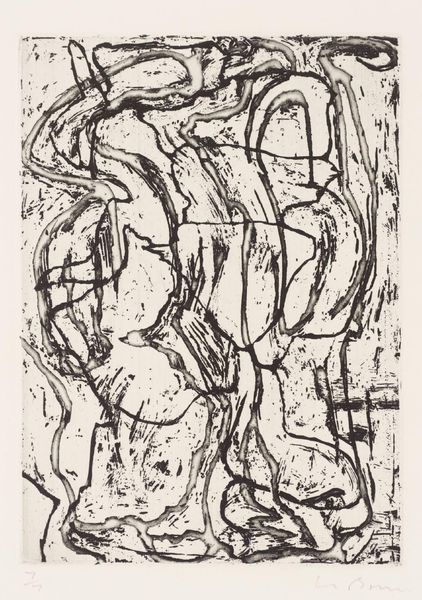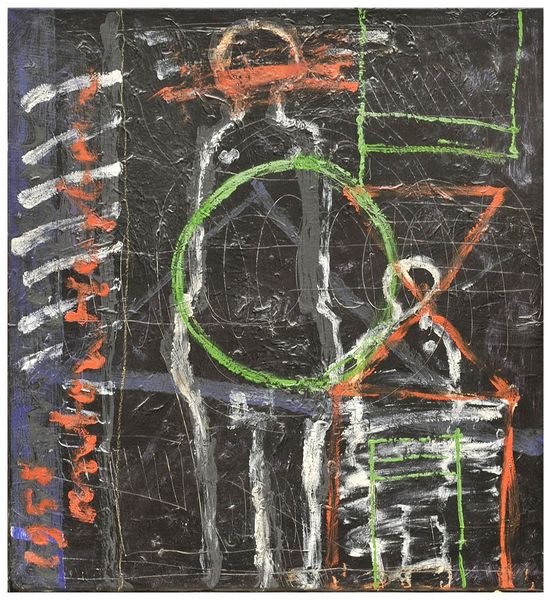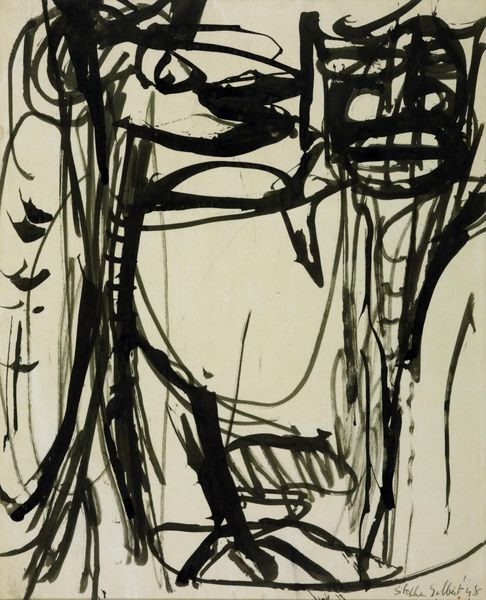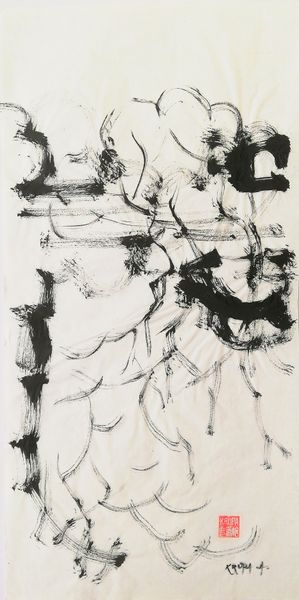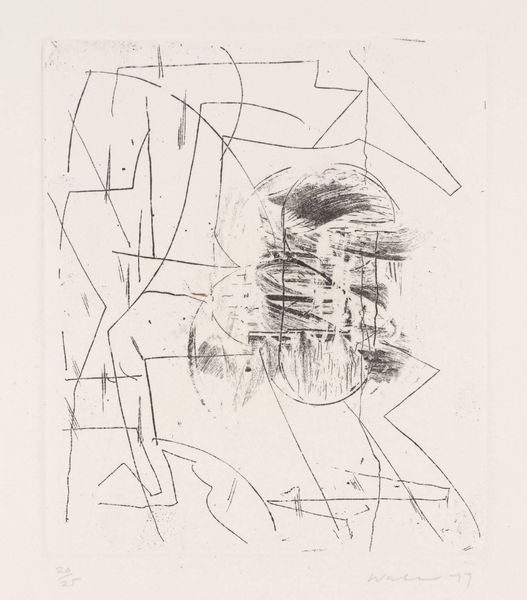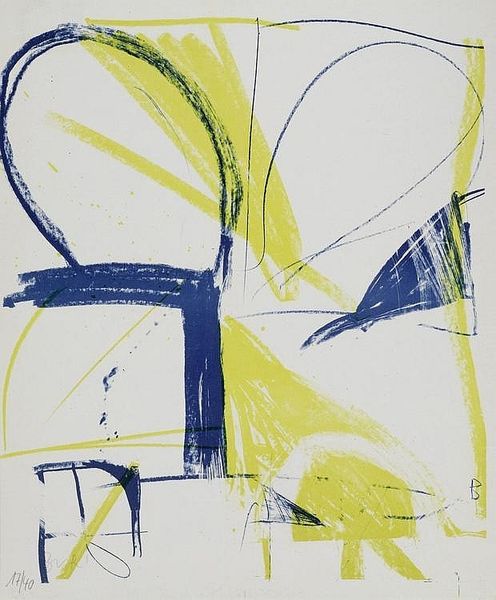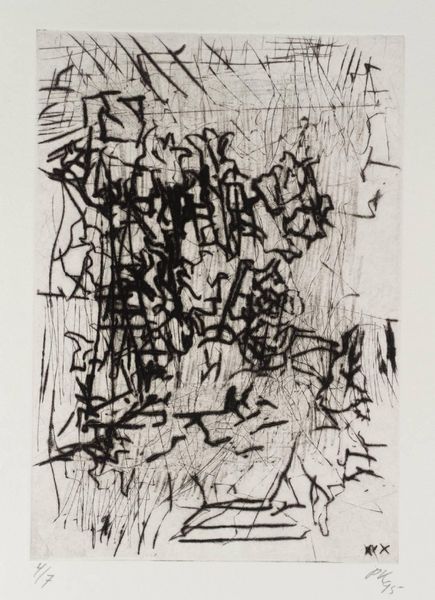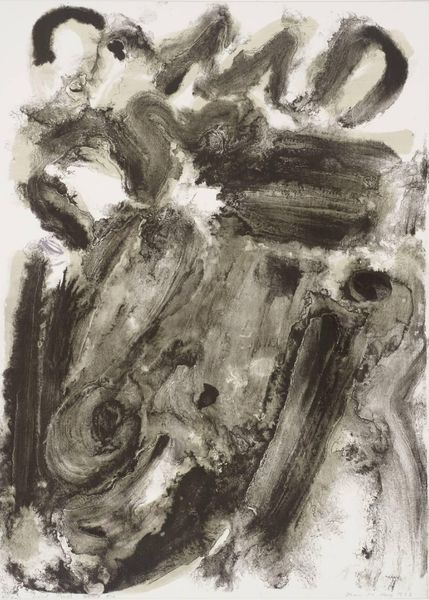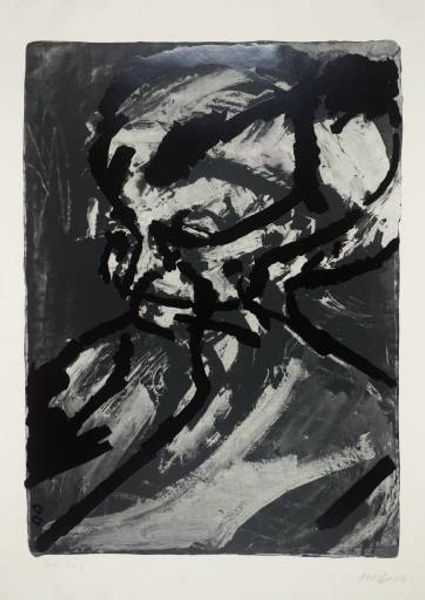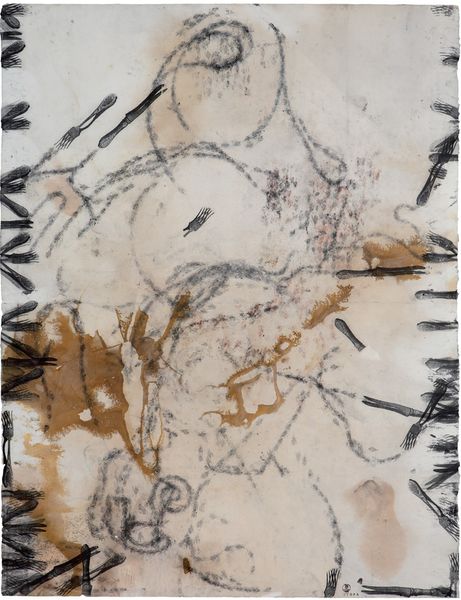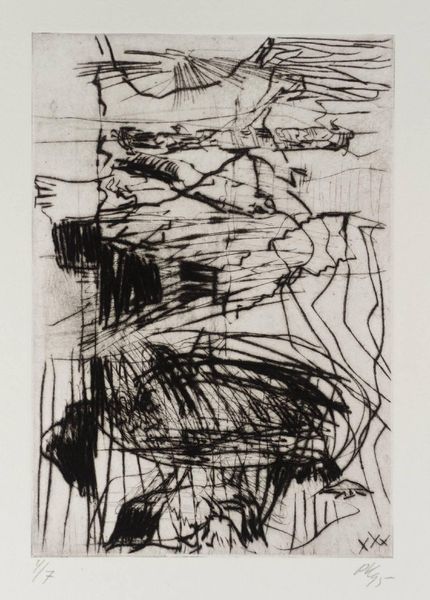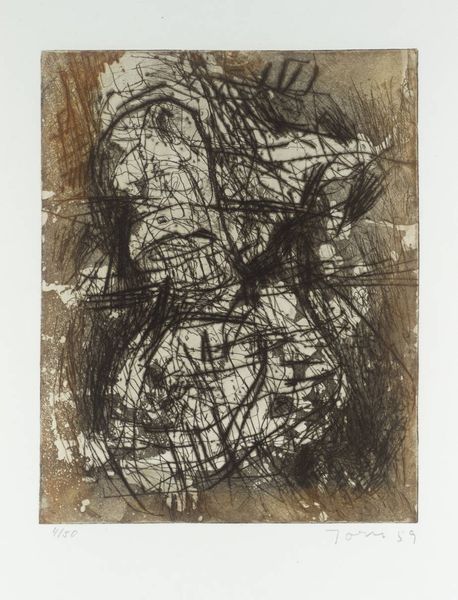
Copyright: Brice Marden,Fair Use
Curator: Brice Marden's "Post Calligraphic Drawing" from 1998 is a whirlwind of ink on paper, a fascinating exploration of gestural abstraction. The energy is quite palpable. What are your first impressions? Editor: It's definitely got a chaotic sort of energy, with all those lines overlapping. At first glance, it seems like a purely abstract exploration of form and line, but what do you see in it? Curator: For me, this piece really opens up a conversation around mark-making and power. Marden’s deliberate, almost violent, application of ink is happening within a larger art historical context. How might we read this through a feminist lens, considering the historically gendered associations of mark-making, line, and gesture? Think about Abstract Expressionism and its very male-dominated history. Editor: I hadn't really thought about that. It makes me consider how his choices might engage with or challenge the legacy of abstract expressionism and maybe even try to redefine it outside of such rigid boundaries? Curator: Precisely. The title, "Post Calligraphic," further complicates things. Calligraphy itself carries a huge amount of cultural weight, particularly in Asian art traditions. By calling it "post" calligraphic, what existing systems is he engaging with? Or subverting? Editor: So he's almost like, pulling apart those traditional ideas, like a deconstruction of what it means to even create a line? The ink as a disruption maybe? Curator: Exactly. We have to remember that art doesn’t exist in a vacuum. Consider how the artist might also be aware of race, of the legacies of colonialism. Even seemingly abstract gestures carry historical weight. Marden prompts a much-needed and urgent reassessment of historical narratives. Editor: That gives me a lot to think about. I definitely see now there is much more to this than meets the eye! Curator: Indeed, by questioning seemingly settled notions of abstraction, we begin to engage with the socio-political systems surrounding the work itself.
Comments
No comments
Be the first to comment and join the conversation on the ultimate creative platform.
